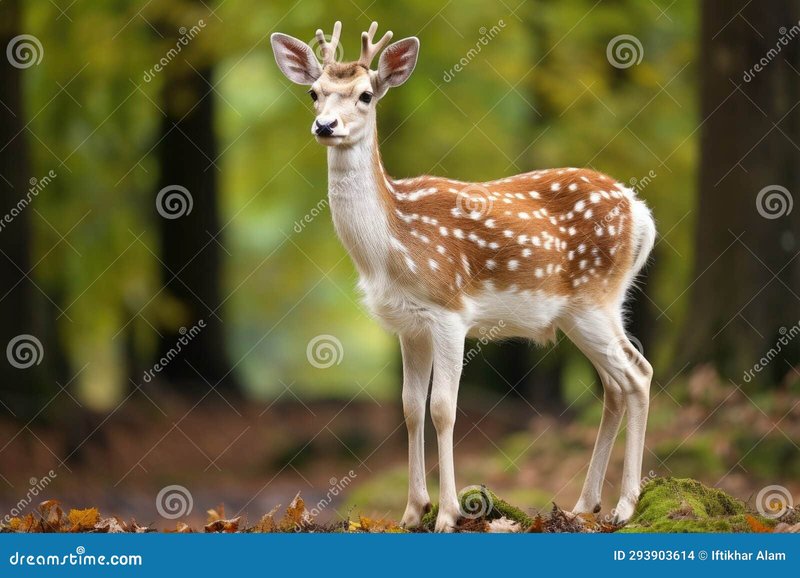
Imagine you’re at a cozy coffee shop, chatting with a friend about these charming animals. You might say, “Did you know some people think all deer are the same? Or that fallow deer only exist in Europe?” In reality, fallow deer are quite distinct and have an interesting history that tugs at the strings of both culture and ecology. So, let’s unpack some of the most common myths about fallow deer and set the record straight.
Myth 1: Fallow Deer Are Only Found in Europe
One of the biggest misconceptions about fallow deer is that they’re confined to Europe. While fallow deer have a strong historical presence across European forests, they’ve spread far beyond that. You might be surprised to learn that these deer were introduced to different regions, including North America and Australia, where they have successfully established populations.
The fallow deer’s adaptability has played a significant role in their migration. They thrive in diverse habitats, from woodlands and grasslands to park-like settings. For instance, if you visit a nature reserve in the United States, there’s a chance you might come across a fallow deer munching on grass. This adaptability is part of what makes them fascinating!
Myth 2: All Fallow Deer Have the Same Coloration
You might be thinking, “Aren’t all fallow deer light brown with white spots?” That’s a common image, but here’s the thing: fallow deer come in a variety of colors. While the typical light brown coat with white spots is the most recognized, they can also have dark brown or even white coats. Let me explain.
This variation in coloration can be attributed to their genetics and the specific environment they live in. Darker fallow deer might be better camouflaged in dense forest areas, while lighter ones thrive in open spaces. Imagine walking through a forest and spotting a sleek, dark brown deer blending perfectly with the shadows. It’s a beautiful sight that shows nature’s creativity.
Myth 3: Fallow Deer Are Aggressive
Another myth surrounding fallow deer is that they’re aggressive creatures ready to charge at any moment. Truth be told, fallow deer are typically quite gentle and shy. In fact, they often prefer to flee rather than confront a threat. When you observe them in the wild, they’re more likely to scatter than to stand their ground.
That said, like any wild animal, they can behave defensively if they feel threatened—especially during mating season when males might be more territorial. It’s essential to respect their space and observe from a distance. Next time you see a group of fallow deer, take a moment to appreciate their peace-loving nature instead of worrying about them charging at you.
Myth 4: Fallow Deer Only Eat Grass
You might picture fallow deer grazing in fields and assume that’s all they munch on. While grass is a part of their diet, it’s a bit more diverse than that. Fallow deer are actually quite the foodies! Their diet includes leaves, shoots, fruits, and even nuts.
During different seasons, they adapt their eating habits. For instance, in the summer, you might see them munching on fresh green shoots, while in autumn, they’ll seek out acorns and other nuts. This varied diet helps them maintain a balanced nutrition profile, allowing them to thrive in different environments. It’s like they have a seasonal menu, evolving with nature!
Myth 5: Fallow Deer Are Small
When you think of deer, you might imagine large, towering creatures. Fallow deer, however, don’t always fit that mold. They’re often perceived as small, but that’s not entirely accurate. On average, fallow deer stand about 3 feet tall at the shoulder and can weigh between 100 to 200 pounds, depending on their age and gender.
Of course, they’re smaller than some species like elk or moose, but this doesn’t make them any less impressive. Just picture a fallow deer standing proudly in a field—muscular and graceful. Their sleek bodies show us they’re built for agility, allowing them to navigate through various terrains with ease.
Myth 6: Fallow Deer Are Endangered
Some folks may think that fallow deer are on the verge of extinction. In fact, they are not considered endangered! Although their populations have declined in certain areas due to habitat loss and hunting pressures, they’re generally viewed as a species of least concern by conservationists.
In many places, fallow deer are actively managed and even welcomed in parks and reserves where they can thrive. This management helps ensure that their populations remain stable. So, if you’re ever worried about seeing a fallow deer, rest easy—they’re around and continuing to flourish!
Myth 7: Fallow Deer Are Not Social Animals
You might assume that fallow deer are solitary creatures, but they’re actually quite social! These deer often form groups, especially females and their young. During the mating season, males might strut around and compete with one another to gain the attention of females, showcasing their social interactions.
Observing a herd of fallow deer can be a delightful experience. Watching them interact—whether they’re grazing together or playfully nudging each other—gives us a glimpse into their communal nature. It’s a reminder that even in the wild, animals need companionship, just like we do.
Final Thoughts: Understanding Fallow Deer
So, there you have it! The world of fallow deer is filled with myths and misconceptions, but now you’ve got a clearer picture of who they really are. These charming animals are more than just their beautiful coats. They’re adaptable, social, and have a fascinating lifestyle that’s worth exploring.
Next time someone mentions fallow deer, feel free to share what you’ve learned. Whether they’re roaming the forests of Europe or grazing in a local park, fallow deer are a reminder of nature’s incredible diversity. And who knows? You might just inspire someone else to explore the world of wildlife a little deeper!

